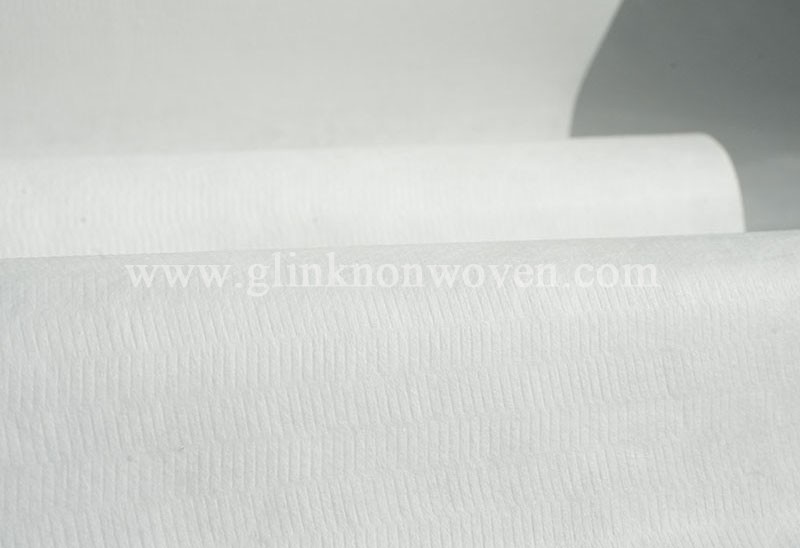ما هي خصائص ومزايا قماش سبونبوند غير المنسوج المحب للماء كمادة خام للطبقة العلوية من الفوط الصحية؟
May 14, 2025
باعتبارها المادة الخام للطبقة العلوية من الفوط الصحية, يتميز قماش سبونبوند غير المنسوج، المُحب للماء، بمجموعة من الخصائص والمزايا، مما يجعله خيارًا مهمًا في صناعة منتجات النظافة الحديثة. وفيما يلي وصف تفصيلي لخصائصه ومزاياه: 1. الخصائصتكوين المواد: قماش غير منسوج محب للماء من سبونبوند يتم تصنيعها بشكل أساسي من البوليمرات الجزيئية العالية مثل البولي بروبيلين (PP) ويتم تصنيعها من خلال الغزل والتمدد ووضع الشبكات والترابط وغيرها من العمليات.محبة للماء:يحتوي سطح القماش غير المنسوج المحب للماء على مجموعات محبة للماء، والتي يمكنها تشكيل طبقة امتصاص محبة للماء اتجاهية على سطح القماش غير المنسوج، بحيث يمكن للسائل أن يبلل بسرعة وينتشر على سطح المادة.الخصائص الهيكلية:يتميز قماش سبونبوند غير المنسوج بالقوة العالية والاستطالة العالية، مما يمكنه تلبية متطلبات الفوط الصحية للخصائص الميكانيكية لمادة السطح.يتم ترتيب أليافها بشكل أنيق وبنية المسام موحدة، مما يساعد على اختراق وتوزيع السوائل بسرعة.2. المزاياامتصاص وتوصيل سريع:يمكن للأقمشة غير المنسوجة المحبة للماء امتصاص وتوصيل سوائل الجسم بسرعة، ونقلها إلى الطبقة الأساسية الماصة أدناه، وتقليل كمية تسرب سوائل الجسم، والحفاظ على الجفاف والراحة عند ملامستها للجلد. ناعمة ومريحة:تتميز أقمشة سبونبوند غير المنسوجة بأنها ناعمة الملمس، ومريحة عند اللمس، ولا تسبب تهيجًا أو ضررًا ناتجًا عن الاحتكاك للجلد. تهوية جيدة:يساعد الهيكل المسامي للأقمشة غير المنسوجة على دوران الهواء، والحفاظ على دوران الهواء داخل الفوط الصحية، وتقليل الرطوبة والاختناق. صديق للبيئة وقابل للتحلل:تتكون الأقمشة غير المنسوجة من مادة سبونبوند في الغالب من مواد قابلة للتحلل، والتي تتحلل بسهولة بعد الاستخدام ولا تلوث البيئة. فعالية التكلفة:بالمقارنة مع المواد التقليدية مثل القطن الخالص، فإن الأقمشة غير المنسوجة المحبة للماء تتمتع بفعالية أعلى من حيث التكلفة ويمكنها تلبية احتياجات الإنتاج على نطاق واسع مع تقليل تكاليف الإنتاج.مجالات التطبيق الواسعة:بالإضافة إلى المواد السطحية للفوط الصحية، يمكن أيضًا استخدام الأقمشة غير المنسوجة المحبة للماء في المنتجات الصحية التي تستخدم لمرة واحدة الأخرى، مثل الحفاضات، ومنصات الرضاعة، وما إلى ذلك، بالإضافة إلى المجالات الطبية والحماية والتعبئة والتغليف وغيرها. باختصار، تتميز أقمشة سبونبوند غير المنسوجة المحبة للماء، باعتبارها المادة الخام لسطح الفوط الصحية، بمزايا الامتصاص والتوصيل السريع، والنعومة والراحة، والتهوية الجيدة، والحماية البيئية والتحلل البيولوجي، والفعالية العالية من حيث التكلفة. هذه الخصائص تجعل أقمشة سبونبوند غير المنسوجة المحبة للماء خيارًا مهمًا في صناعة المنتجات الصحية الحديثة، حيث توفر للمستهلكين تجربة استخدام منتجات صحية عالية الجودة ومريحة وصديقة للبيئة. إذا كنت بحاجة إلى معرفة المزيد من التفاصيل، يرجى النقر www.glinknonwoven.com
اقرأ أكثر
